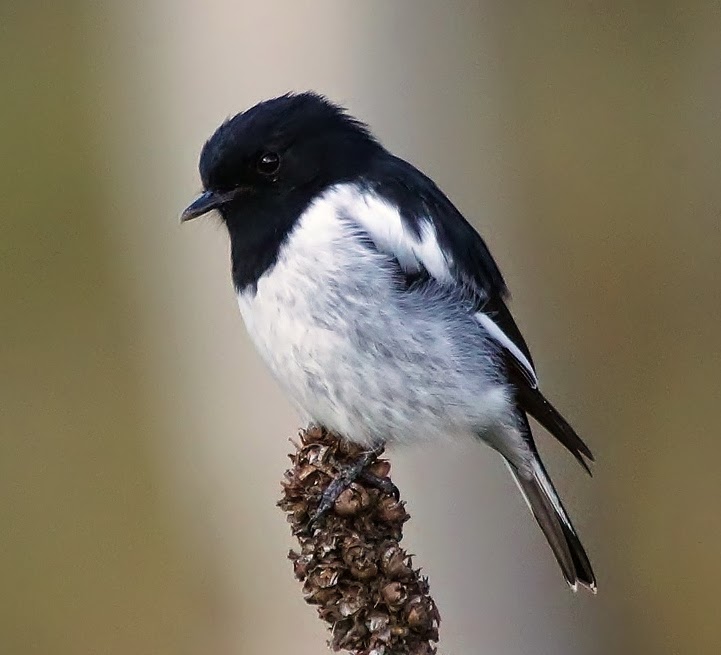 |
| Photo by David Cook (Flickr) |
Common name:
hooded robin (en); rouxinol-de-capuz (pt); miro à capuchon (fr); petroica encapuchada (es); schwarzkopfschnäpper (de)
Taxonomy:
Order Passeriformes
Family Petroicidae
Range:
This species is endemic to Australia, being found throughout the Australian mainland.
Size:
These birds are 15-17,5 cm long and have a wingspan of 24-29 cm. They weigh 21-28 g.
Habitat:
The hooded robin is found in open, dry savannas, and in dry scrublands with scattered trees, particularly in areas dominated by Eucalyptus and Acacia.
Diet:
They mainly hunt insects ad other small arthropods by sallying out from a perch, also taking seeds.
Breeding:
Hooded robins breed in July-January. They are monogamous and the nest is an open cup made of leaves and bark bound together with spider webs. The nest is usually placed
in a crevice, hollow or hole in a tree or stump. The female lays 1-3 pale olive or bluish-green eggs with darker spots and blotches. She incubates the eggs alone for 14-15 days. The chicks fledge 13 days after hatching. Each pair usually raises 2 broods per season, but can lay up to 5 replacement clutches.
Conservation:
IUCN status – LC (Least Concern)
This species has a very large breeding range and is reported to be locally fairly common. Still, the population is estimated to be in decline owing to habitat loss.







